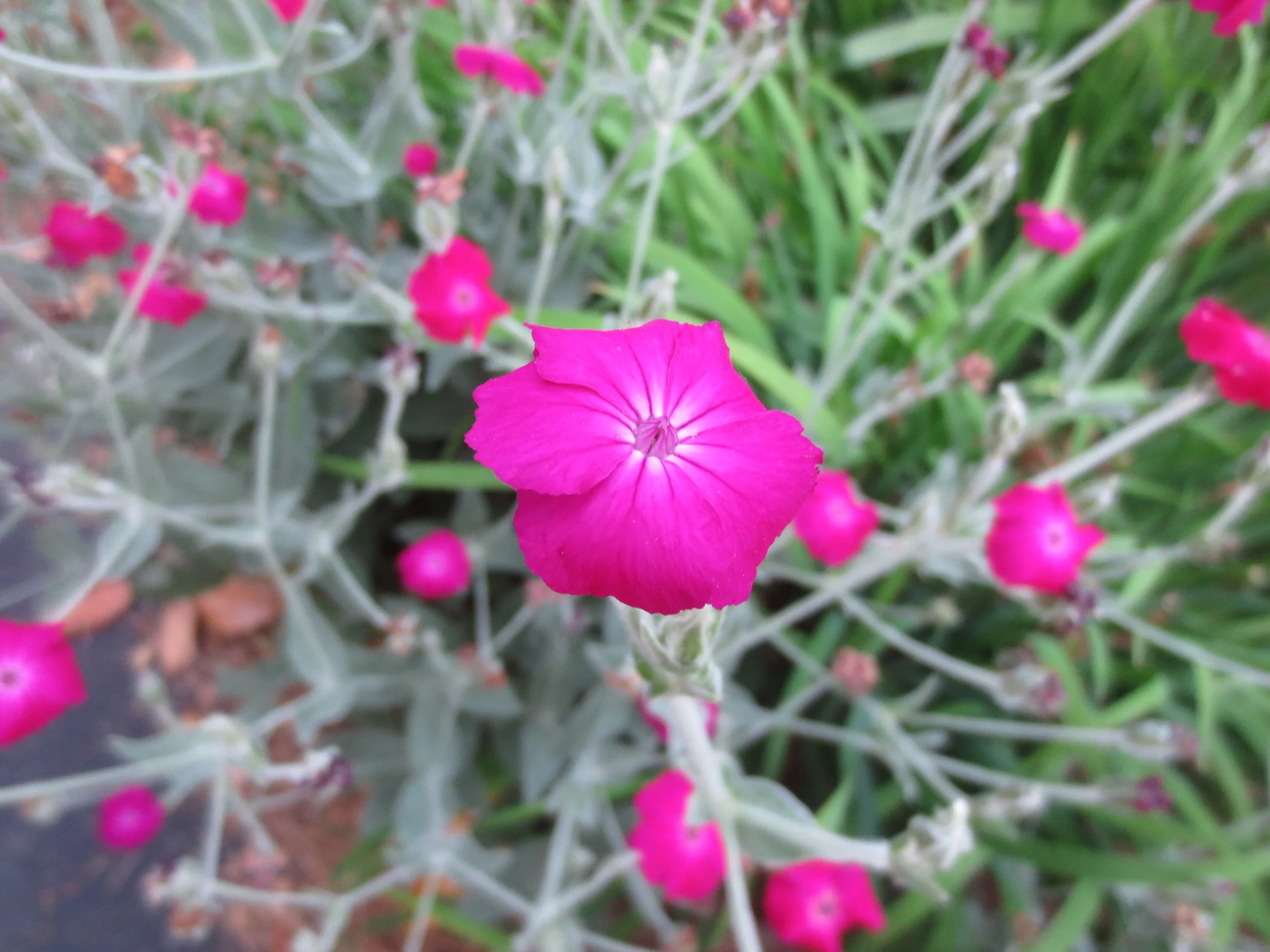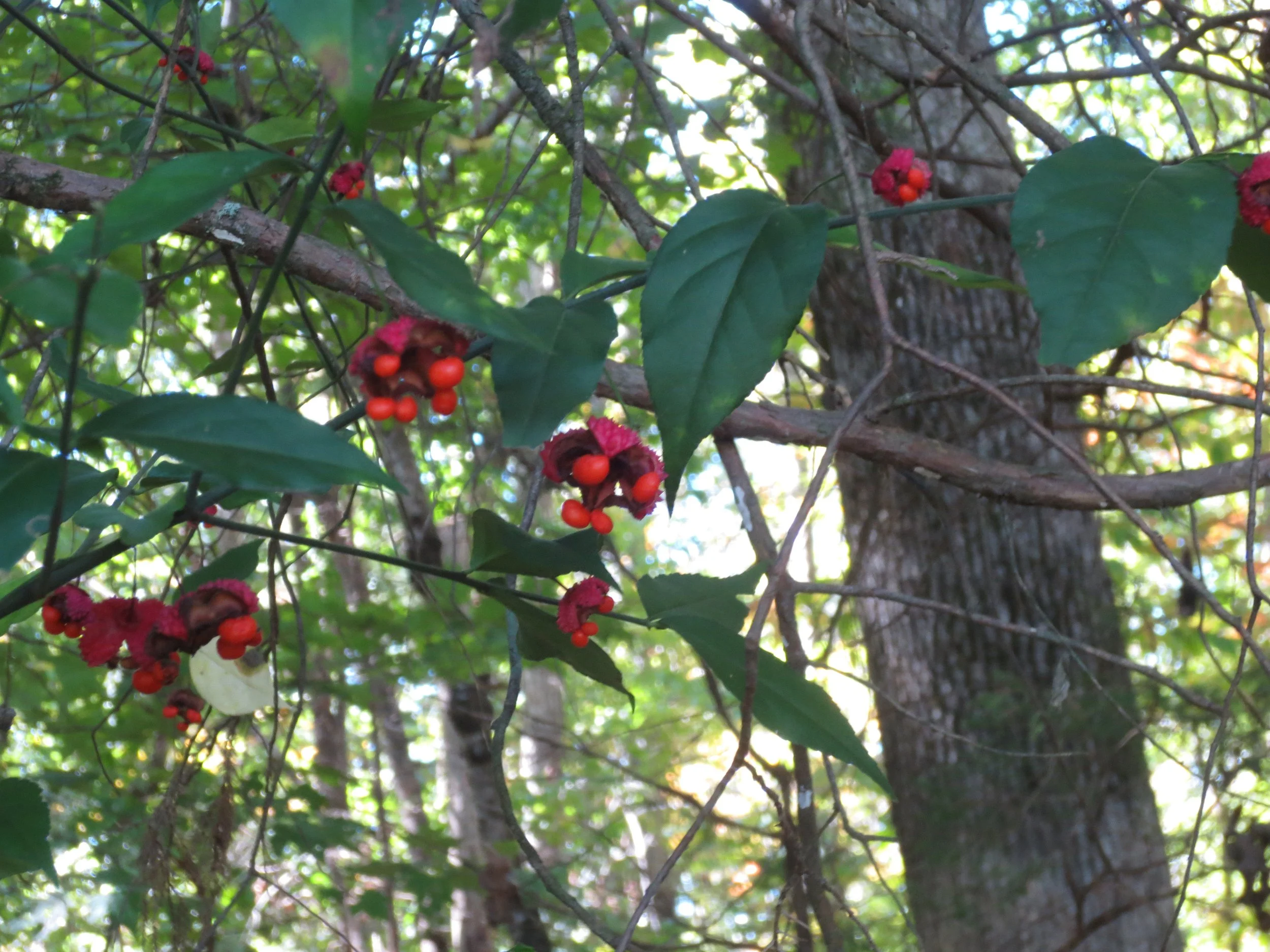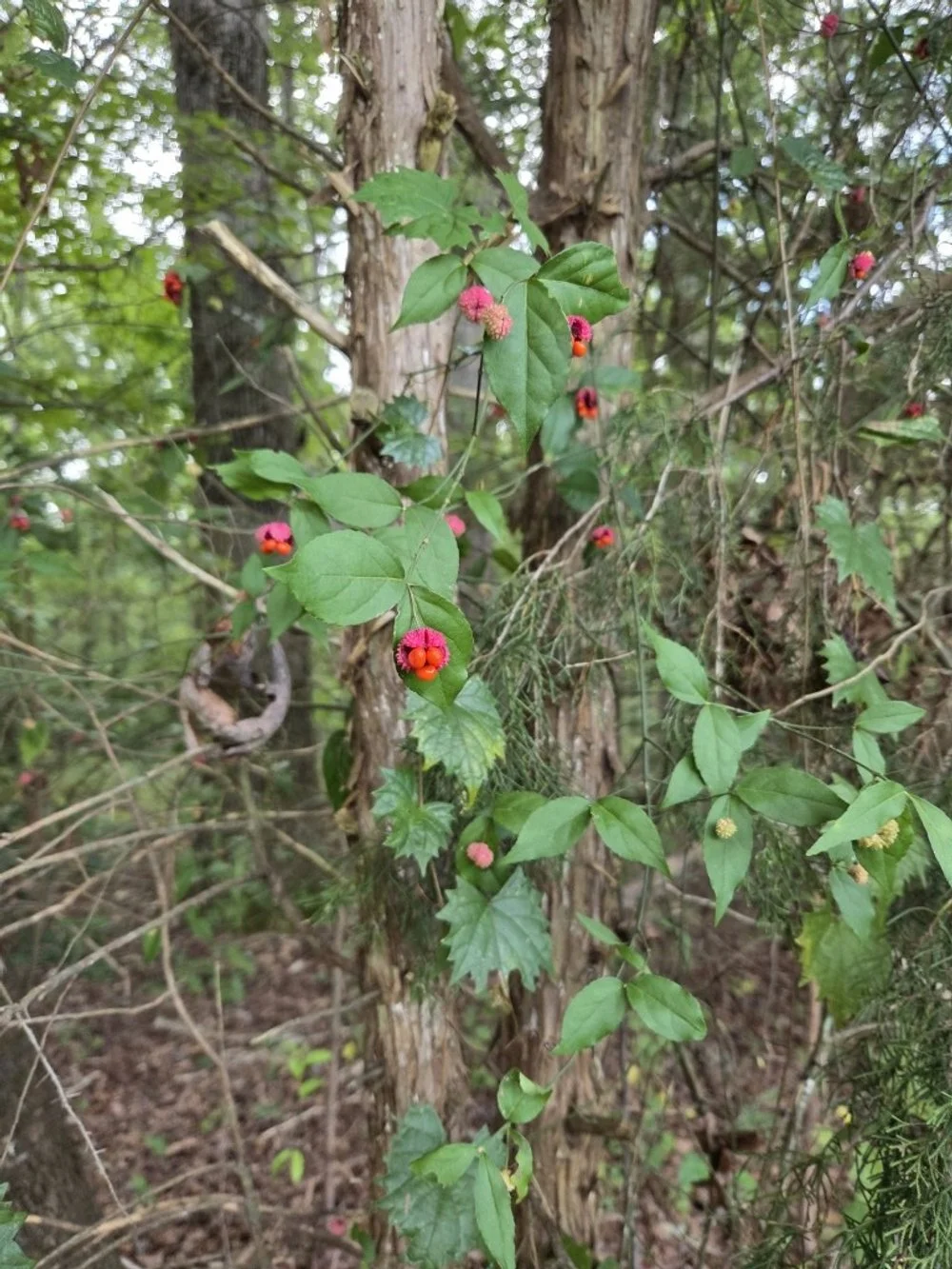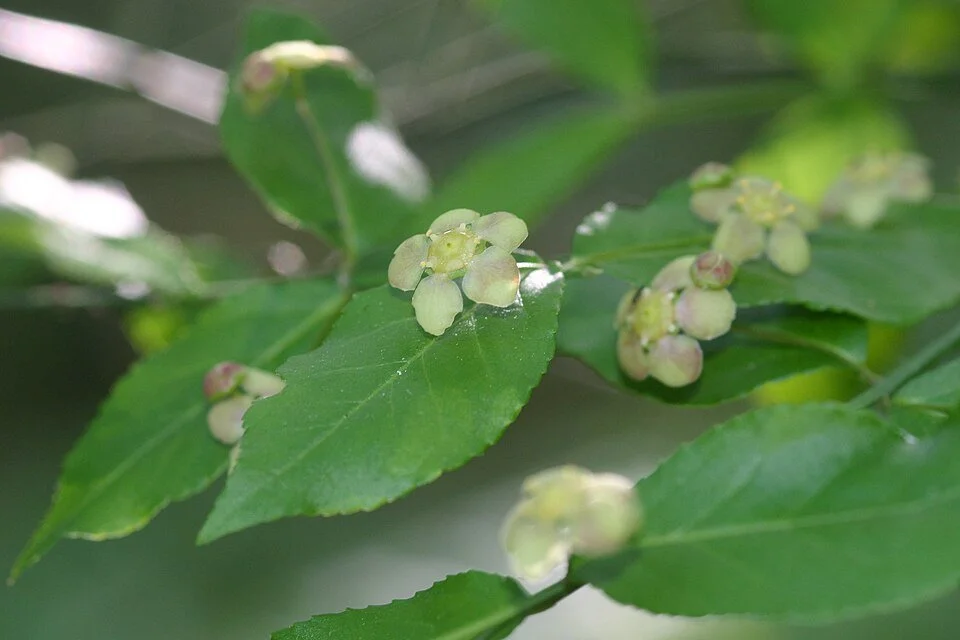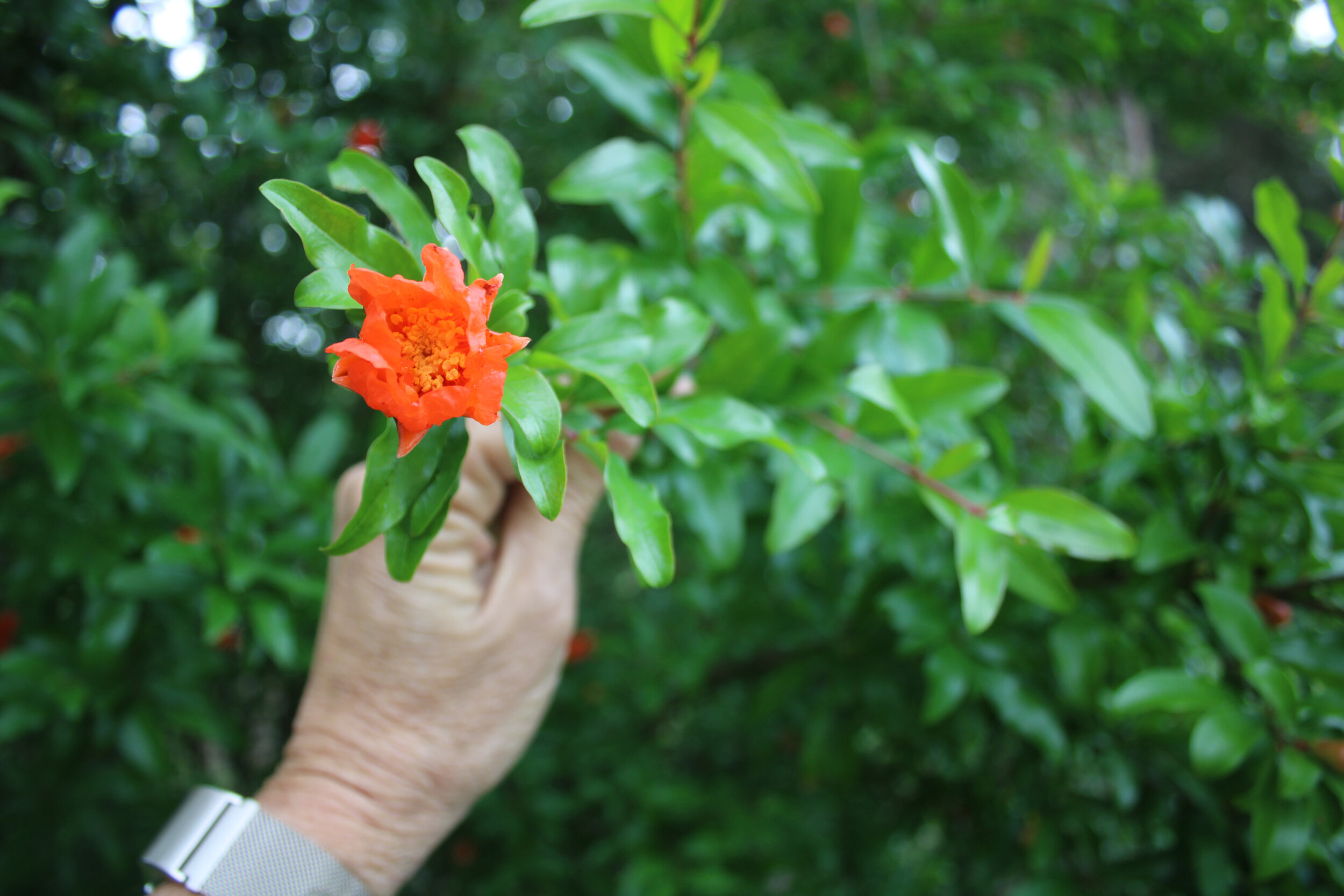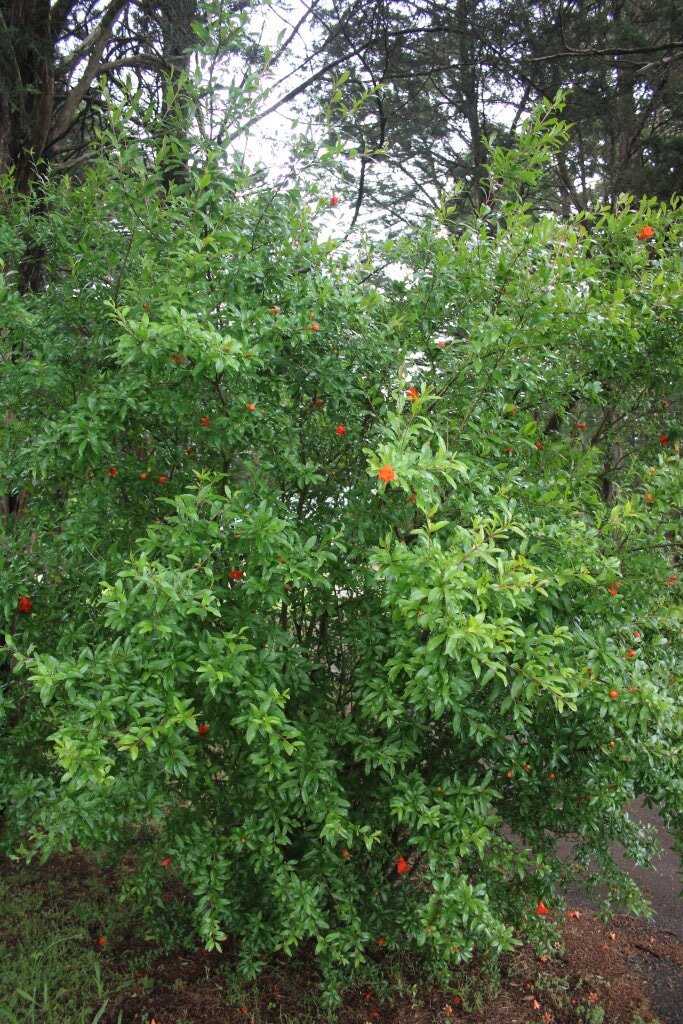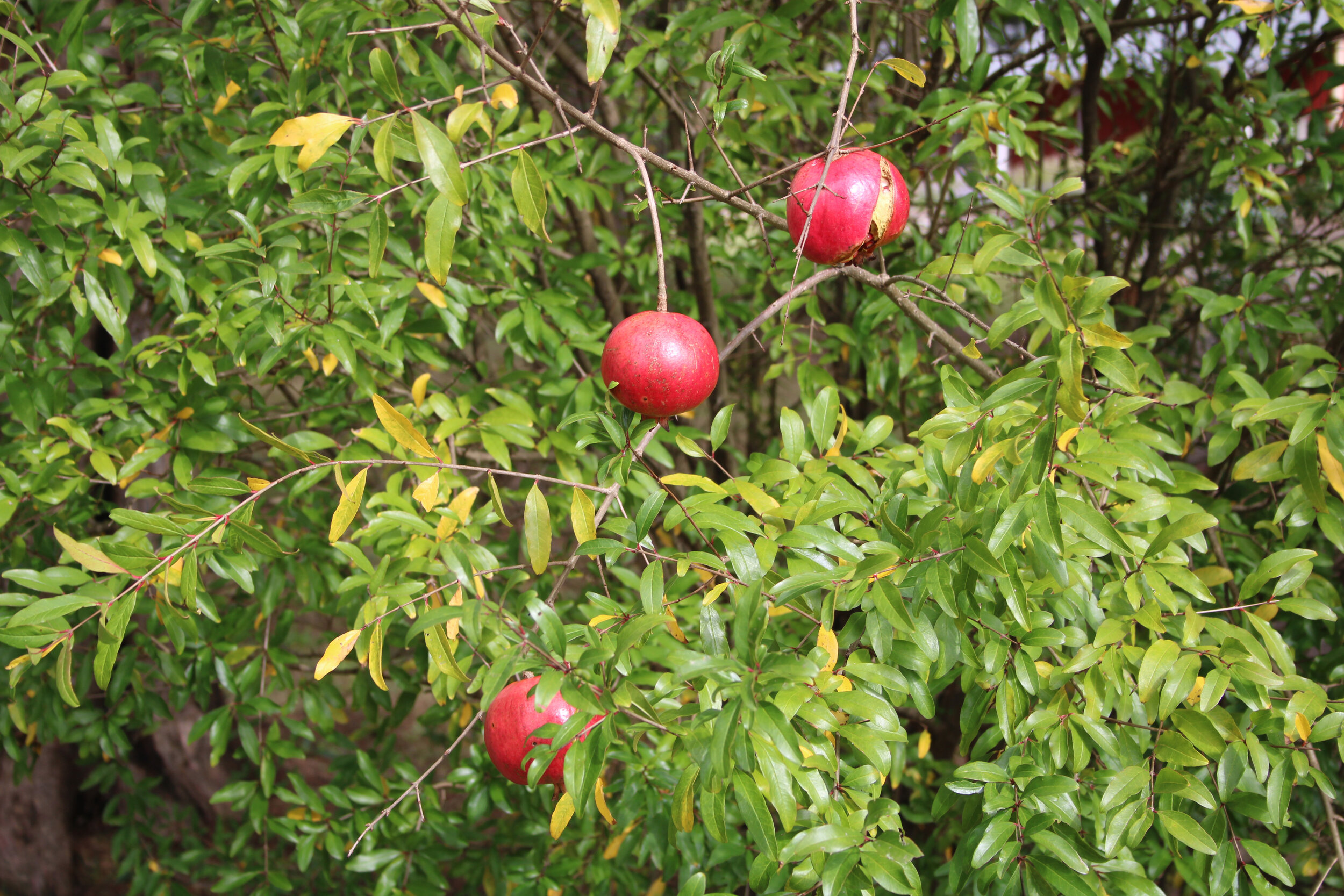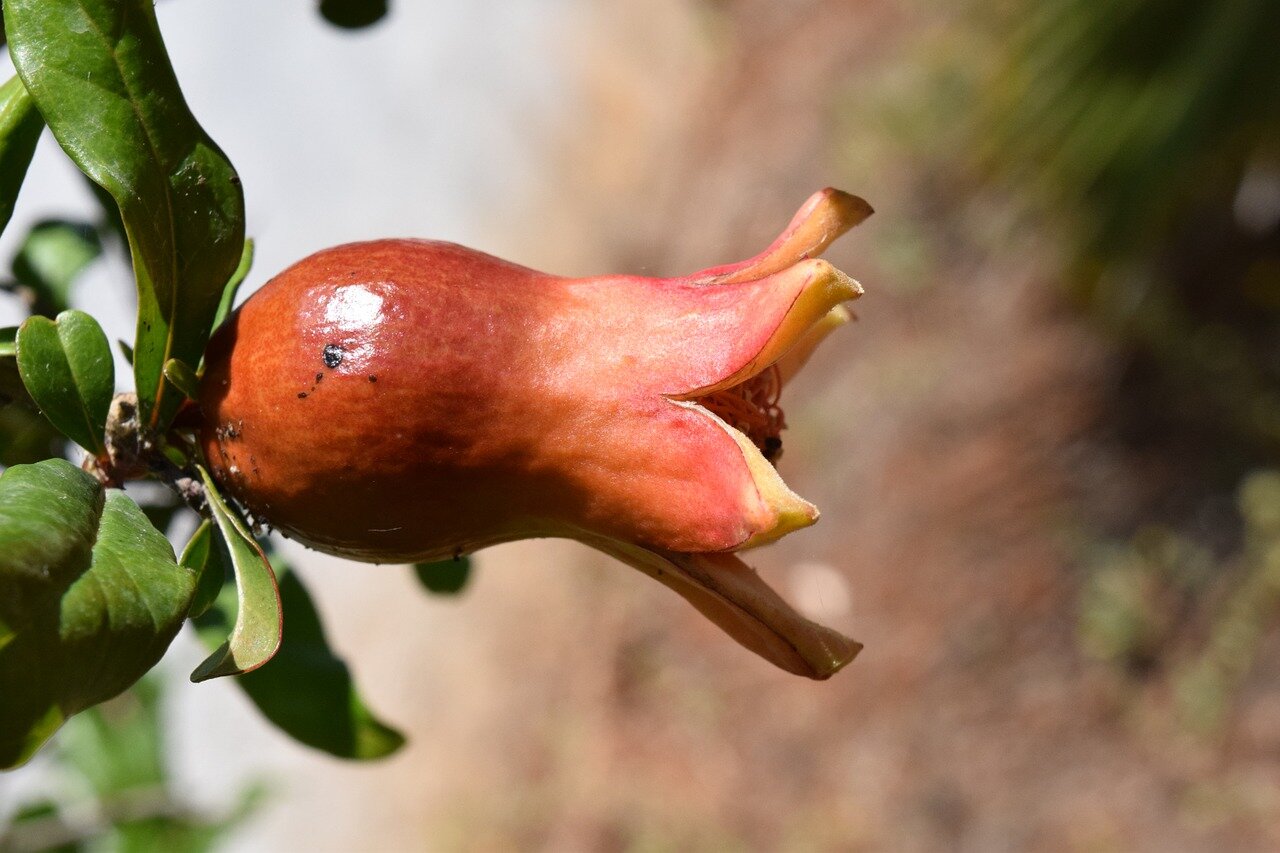During my weekly walk through our woodlands, my attention was drawn by a bright spot of color. It was the brilliantly colored seed clusters of Euonymus americanus, (yoo-ON-uh-mus ah-mer-uh-KAY-nus), commonly called Strawberry Bush or Hearts-a-Busting. As we were growing up, my sister called these Cat’s Paws. There is a strong resemblance between the seed clusters and the bottoms of my cat’s feet. The flowers occur in late spring to early summer and are forgettable – small, with yellow-green petals. In contrast, the seeds clusters are quite noticeable, with orange-red berries bursting from a burgundy capsule. The contrast sounds ugly, but is quite beautiful. The unripe seed capsules resemble strawberries, hence the common name. Leaves are narrow, medium green, and about three inches long. You are most likely to notice Strawberry Bush in fall, when their seeds color up and leaves turn yellow-green or occasionally red. Do not confuse this native with its cousin, Euonymus alatus, “Burning Bush” which is known for its brilliant red fall foliage.
Strawberry Bush is native to the southeast. It will thrive in sun or shade in zones 6-9, and is not demanding although it enjoys a soil containing plenty of organic matter. Observers are most likely to find them in areas that are protected by surrounding vegetation since deer like to nibble. Songbirds and wild turkeys eat the seeds and spread them about.
Strawberry Bush looks best in shady woodlands. Although low-maintenance, think twice before placing it in a manicured border. It is not a beauty queen. Its stems are green year-round, but the form is sort of gangly. Shrubs spread by suckering, which adds to the unkempt appearance. They reach heights up to six feet wide with a similar spread. Use them in native gardens or as a native hedge.
Enjoy the orange-red seeds with darker purple-red sepals but don’t be tempted to taste test. The seeds are mildly toxic and cause significant stomach upset.
Do not confuse native Euonymous americanus with the non-native Euonymous alata, commonly known as Burning Bush. Burning Bush has brilliant red fall color. The seeds look a little bit like Strawberry Bush, but they are held in singles instead of clusters. Euonymous alata is invasive. “Invasive” means that it will spread and will out-compete native shrubs. It is tempting to use the words invasive and aggressive interchangeably but they are not the same. An aggressive plant spreads energetically but does not displace native plants. Know the difference, and try to use the correct term. Currently, responsible landcape designers in the southeastern US will not recommend the invasive Burning Bush. A new, sterile form was recently introduced. So, there is still a possibility that we can enjoy the gorgeous fall color of Burning Bush without concern for invasiveness. Stay tuned as I follow the news about trials of the non-invasive version, Fire Ball Seedless® Burning Bush, a Proven Winners introduction.
Strawberry Bush or Hearts-a-Busting plants love a woodland setting.
Native Euonymous americanus is seen here coexisting with wild grape.
Euonymous americanus flowers, courtesy of Wikipedia
This is the invasive Euonymous alata, Burning Bush. If you love its fall color, plant ONLY the new, sterile form.
